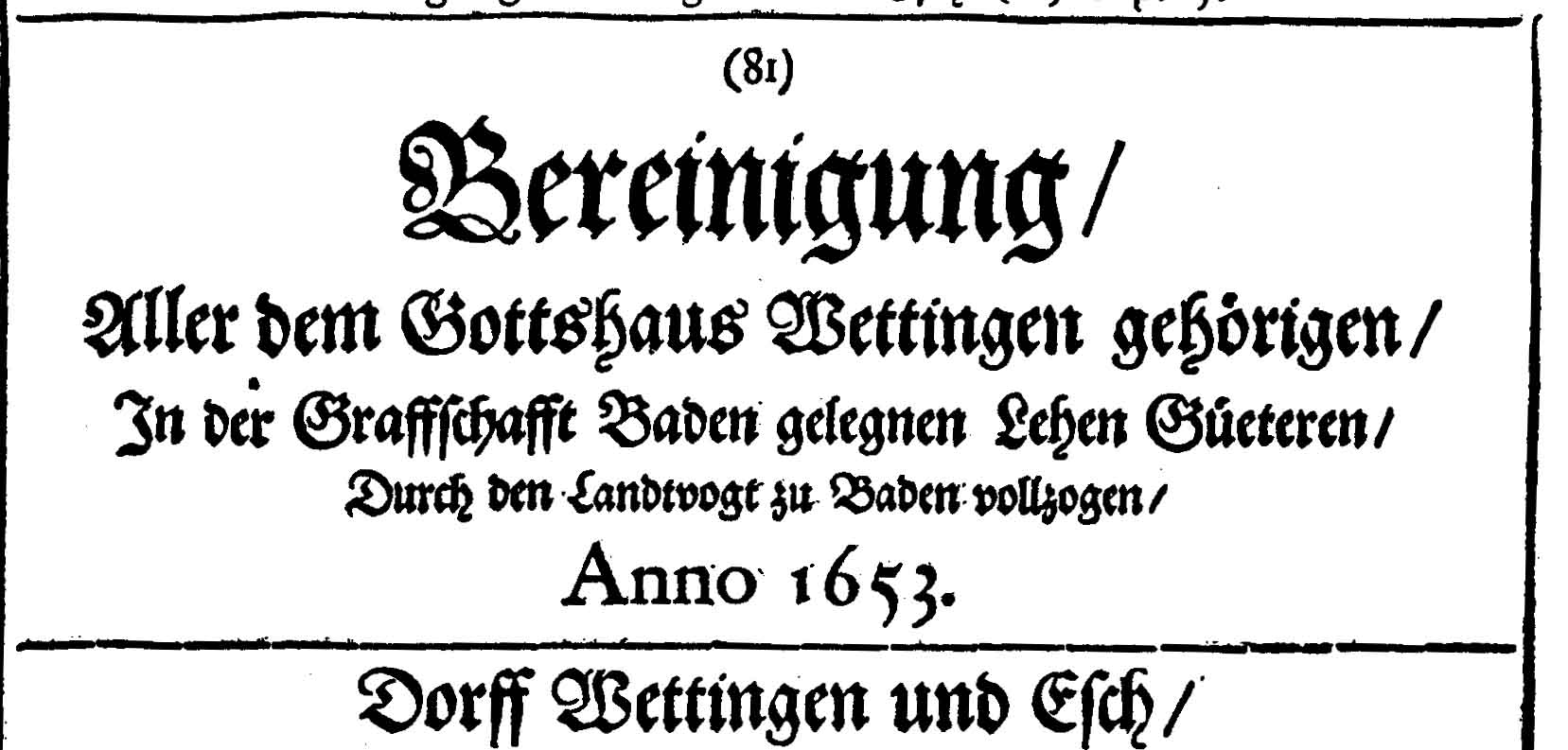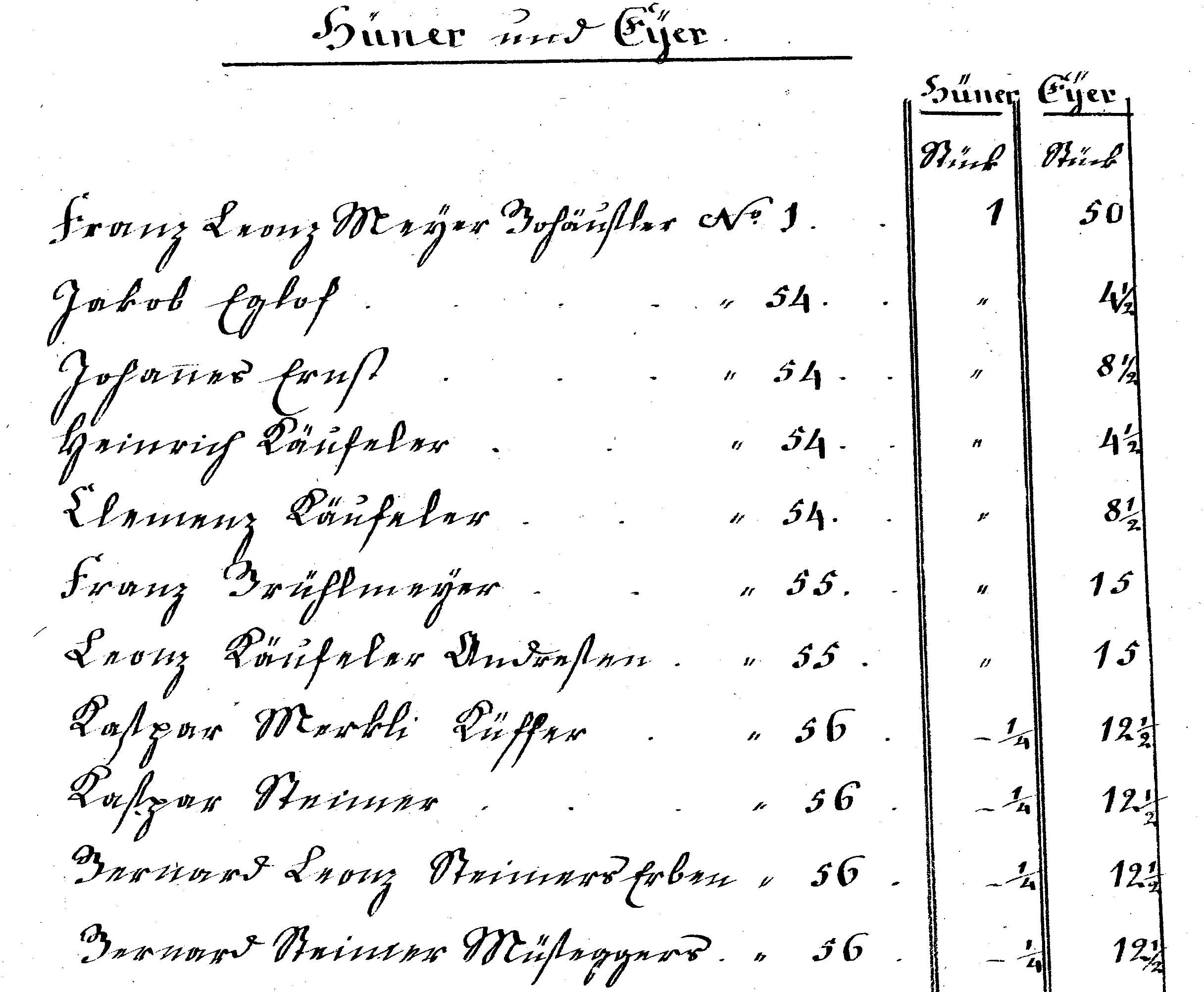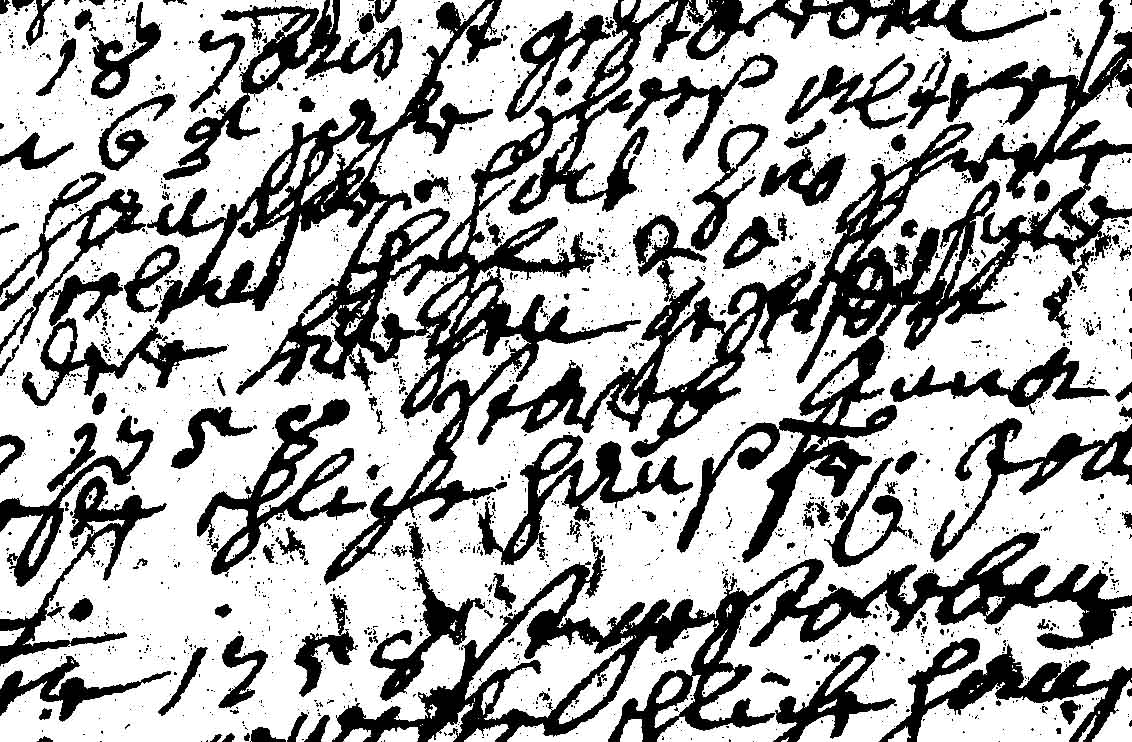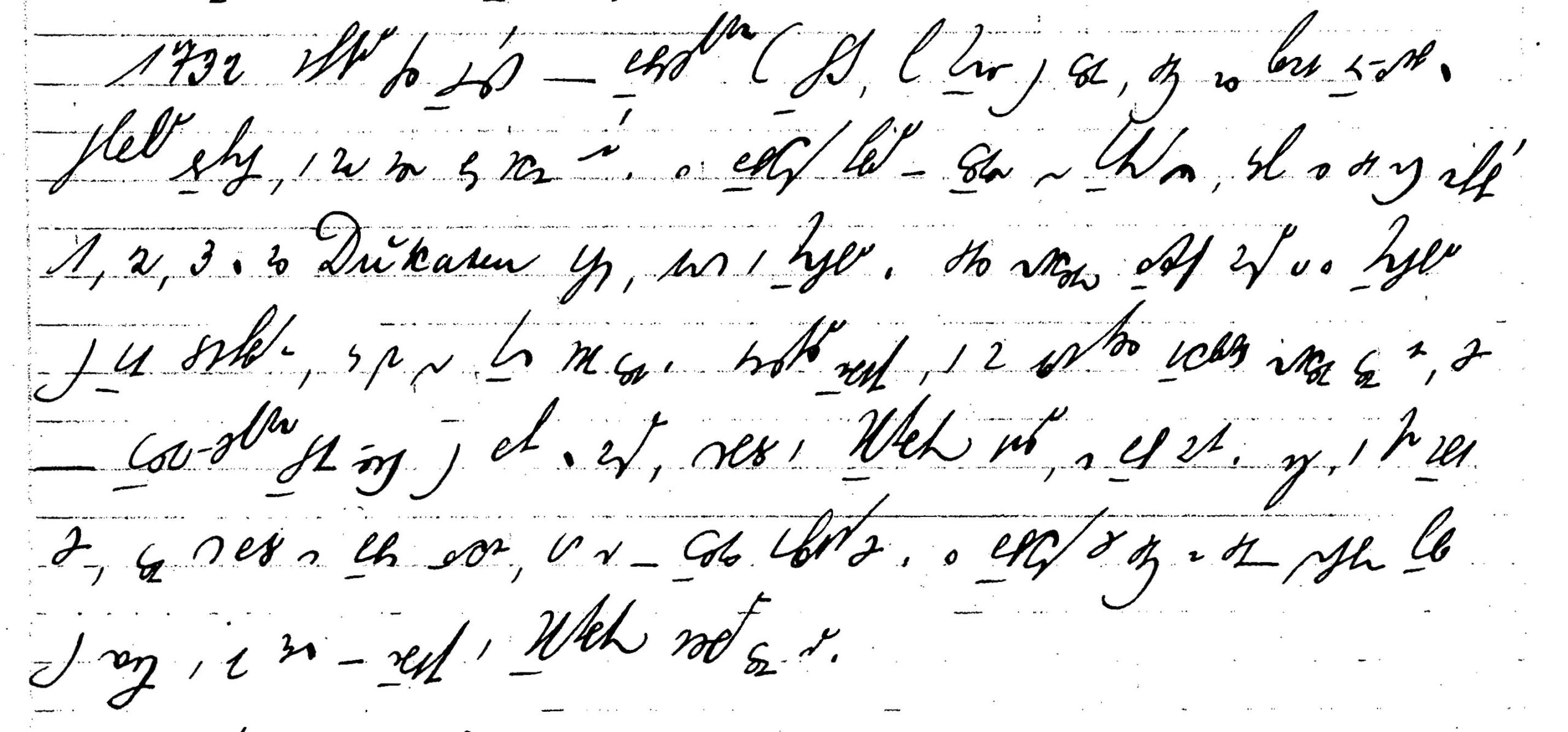How I got hooked
In the second half of the year 1999, after having enjoyed two full years of retirement, I suddenly found myself deeply involved in researching family history. Members of a family group in the USA had contacted some of my relatives via the Internet. My nephew, David, was contacted first, then my son, Matthias, and finally myself. These hobby genealogists had been in touch with each other through e-mail and had created a complete family tree as of 1869. They had been looking with great passion for their European ancestors and relatives, but with little success. They essentially call themselves Meyer or Meyers (again), but they descended from Kaspar Bruehlmeier, who emigrated in 1869. Some of them believed he was German and had immigrated to the USA through Switzerland, indicating Kapsweiher in Bavaria as his place of birth. During their search they came across two of my father’s cousins, whose own father, Emil Bruehlmeier, had emigrated to California in 1906.
The information about Kapsweiher seemed strange to us all, but it also made us curious. It quickly became clear that I, as “The Retired Person,” would try to clear up the mystery and attempt to acquire the necessary information. It is not certain whether I would have accepted this task if I had known the full scope of the mission at hand. One way or the other, my research led to totally different results than expected, which gave me the fillip to create a complete family tree for our family and thus to explore the youngest gender of Wettingen, the Bruehlmeier-gender. Due to this decision, I was rewarded with – besides hundreds of working hours – some excursions to the Bernese countryside, a trip in springtime to the Pfalz (Germany, used to belong to Bavaria) and later, also, a stay in California in the fall.
One thing is certain: Without the support of a computer and the Internet, I would not have begun this work. In order to manage the gathered data, the computer proves to be an irreplaceable instrument. There are currently dozens of genealogy programs which facilitate the management of data and which are capable of displaying the relationships between the different persons in a manifold and systematic manner. I still prefer to use the German version of ‘WinFamily’, which is software produced in Norway. The vast amount of information and the different contacts I found through the Internet and through e-mail groups also proved to be very valuable. I also found my membership with the Swiss Society for Genealogy (Schweizerische Gesellschaft fuer Familienforschung, SGfF) very helpful. Their homepage http://www.eye.ch/swissgen is a practical portal to the world of genealogy and their closed mailing list for all members is a very active discussion forum.
So I started my research and soon found myself going in many directions. I had to learn the basics of genealogy, get familiar with the technical aids, obtain permissions, ask all living members of the “Bruehlmeier”-gender for help, dig up numerous archives, decipher old files that were sometimes adventurous writings , travel to many different places, study old maps and the “History of the City of Wettingen,” read for hours in the “Archive of the Abbey,” view passenger lists from emigrant ships, enter the names and dates into the PC, compare, combine, correct, look with a more precise focus, come to terms with contradictory findings, etc.
Such a research task can never really be finished. Nevertheless, I wanted to come to a stopping point and I am therefore presenting the most important results to everybody interested in this writing. I took the freedom not only to simply list these provisional results, but also to choose the form of report that invites the reader to take part in the process of gradually finding the true circumstances.
The Bruehl
Naturally, the first question that needs to be asked is the one about the origin of our name. The answer seems obvious: There happened to be a man called “Meier” who lived in the “Bruehl.” Since there were so many people called “Meier” in Wettingen, his nick-name gradually became his family name “Bruehlmeier”. One would want to know exactly at what point this happened, so one starts looking for possible sources.
We can learn the following facts about the meaning of “Bruehl” in the legacy of my former teacher Eduard Spiegelberg, who acted to his death (1958) as a local historian in Wettingen:
Bruehl: originally stood for a low-laying thicket, rich of water, which served for the upbringing of deer and pigs. For this reason, the Bruehl was fenced and could be regarded as a kind of “animal garden“. With the ongoing extension of the township, the thicket was cut down, the ground was drained and the Bruehl became a meadow. The low land was very suitable for irrigation by the township’s bourn and therefore granted the cattle the first nourishment in springtime. During the “Aufteilung der Allmende” [kind of a land reform], the farmyard owners were left with the Bauernbruehl [Farmer’s Bruehl] while the abbey took the Herren- or Kloster-Bruehl [Lord’s- or Abbey-Bruehl].
The Meier of Wettingen
Not everybody called “Meier” in Wettingen was, in fact, a Meier. To understand what a Meier was, one needs to envision the following historical facts:
After its founding in 1227, the abbey of Wettingen kept purchasing the surrounding land, and all the land above in Wettingen itself. At first the monks cultivated these grounds themselves, but around 1400 a change in the economic policy became necessary. The abbey established eight so-called “Meierei”. They were farms of about equal size and the surrounding smaller farms were assigned to them. The advantage to this was that the abbey could ask for the same interest of all Meiers. The smaller farms allocated to these Meiereis would not forward their interests directly to the abbey, but would pay a so-called Einzins [Einzins is an old German word consisting of two parts: ein, short for hinein, which means into; and Zins, which means interest. Einzins is therefore an interest which was paid into the Meierei] to the appropriate Meier. The abbey wanted to avoid the additional effort needed to deal with the distribution of goods among heirs or when pieces of land were sold. The owners of newly established parcels of land had to pay interests in any case to the original Meier farmyard. Since each owner of a Meier farmyard also owned goods allocated to other farmyards, they themselves became payers of Einzins toward other Meier farmyards. And since the interests consisted in most cases of produce, several hundred-weight of grain, eggs and chickens were wheeled back and forth every year.
The complicated interest situation in the village led the abbey to create a cleared register of all plats in 1504. In this document, all of the eight farmyards are precisely described and for each plat it was determined who was to pay interest to its owner. With the help of this document, we can determine today who had to pay interests to the abbey directly (as Meier) or indirectly (as payer of Einzins) in 1504. If most of Wettingen had belonged to the abbey back then, it would be possible to create a list of all domiciled genders on the basis of this document. However, this is not the case, since large parts of Wettingen still belonged to other owners. Still it seems as though the abbey had quite completely bought up the Unterdorf [lower part of the village] since all of the eight farmyards resided in this area.
The Bruehlmeier House
In the mentioned list of 1504, the name “Bruehlmeier” can be found for the first time. It is part of the description of the seventh farmyard, yet in context with the house:
„ein hus und hoffstatt lit ob des Bruelmeyers hus am bach…“.
[Old German: roughly „a house and farmyard lies above the Bruehlmeier’s house at the brook“.]
It is peculiar, however, that the name Bruehlmeier is never mentioned, neither with the persons owing interests nor with the persons collecting interests. This can be explained by the fact that the title “Bruehlmeier” was not yet a gender, but a function. He was the Meier on the Meierei in the Bruehl, no matter what he was called. Today we know that the name of this “Bruehl-Meier” in 1504 was Felix Wildheitz, and 20 years later the name of the “Bruehl-Meier” was Bastian Grim.
There can be no doubt about the fact that this “Bruehlmeier House” is the one which was inhabited by Albrik Meier in the mid 20th century and in 1953 the structure became the victim of a still-unsolved act of arson. According to reports by students of the high-school teacher, Hafner, it was pointed out after this event that the house was, in fact, the Stammhaus of the Bruehlmeier’s [i.e. the house which was inhabited by the Bruehlmeier-gender since the foundation of the gender].
Missing: Bruehlmeier
According to my research, the name “Bruehlmeier” – used as a patronymic and not just a by-name – first appears in a court protocol dated May 26, 1587. The protocol holds an account of how Ulrich Bruehlmeier’s daughters had cut wood in a forbidden location. More evidence that our patronymic already existed in the 16th century can be found in a document dated 1599, where Hans Bruehlmeier is mentioned as an advocate for the interests of the village of Wettingen. Thus, he must have been one of the leading figures of the village.
The index of all plats in the village of Wettingen, which was created by the abbey of Wettingen in 1653, now proves to be of fundamental importance for the subsequent research.

On no less than 41 pages, each plat that was owned by the abbey in the village of Wettingen, is listed by size and location. In order to identify exact locations for roughly 1000 plats, the owner (the person owing interests) and the receiver of the interests (the Meier who had to take the interests and deliver them to the abbey) are named. Additionally, there is also mention of the owners of the surrounding plats.
This method of mentioning each piece of land and its proprietor multiple times – namely on the one hand as plats owing interests and on the other hand as plats surrounding others to describe locations – leads to the fact that today, all names of the land-owners during that time are known. In 1653, there were about 160 of them; one and a half centuries earlier there had been only about 34. This shows not only how the possession of land by the abbey had increased during this period, but also the increased splitting of farming ground.

page 127 of the "urbar" of 1813/30
For our research, there is one very important fact: In this complete index of the goods owned by the abbey in 1653, the name “Bruehlmeier” is nonexistent. This allows for only one conclusion:
Since it can be proven that the gender “Bruehlmeier” existed in the years 1587 and 1599, but just as certain was not present in Wettingen in mid 17th century, it must have died out temporarily and was therefore founded a second time.
The most important sources
The deliberations presented so far were mostly based on the two sources already mentioned: the “Archive of the Abbey 1694” and the “History of Wettingen”. In my further research, I concentrated on the following three aspects:
-
Identification of Kaspar Bruehlmeier, who had emigrated to America, as well as his wife Rosina Beetschen. The course and the results of this very exciting part shall be presented in a separate part
-
Creation of a complete family tree
-
Investigation of the dual founding of the gender “Bruehlmeier”
-
Gathering of information about representatives of our gender before 1900
The most important base for the solution of this task is obviously the official Zivilstandsregister [Register with records of all citizens of a city with relevant information like date of birth, marriage, death, etc]. This register was started in Wettingen in 1818/19. Unfortunately, very restrictive data privacy laws have been in effect since 1998 and do not allow for free research as had been in the past. Fortunately, my request to do research was generously and complaisantly granted by the local administration, and I am most grateful for that. But without the goodwill of the still living members of a gender, it is impossible to create a family tree nowadays. Therefore, I turned to all still-living bearers of the name “Bruehlmeier”, both male and female, and asked them to provide the names and dates of births and deaths of their ancestors and relatives. The feedback was enormous and showed that practically everybody had an interest in the completion of a family tree. I would like to thank everybody who answered my request and passed along the known data. Thanks to their help, I succeeded in linking the data extracted from the register with the current situation without any gaps and was therefore able to build a complete family tree of the Bruehlmeier-gender.
When the Zivilstandsregister was founded in Wettingen in 1818, understandably only the person still living and the names of their parents were listed. For this reason, there is a gap of almost 300 years since the founding of the first Bruehlmeier-dynasty (proved to have existed in 1526) and the complete registration of family data that started in the beginning of the 19th century. There are, however, a few representatives of our gender from this time that are mentioned in the “History of Wettingen”, but without any genealogical reference. I also found farmers called Bruehlmeier in the city archive of Wettingen, in several old handwritten files describing plats and their owners, but this data hardly allows for any genealogical findings.
A discovery made at the archive of the catholic parish proved to be of crucial help in establishing the facts of the beginnings of our gender. This discovery was two old Jahrzeitbuch’s [in these books were listed the deceased and the time (the month) of the year in which it was prescribed to pray for their souls in the mass].

Extract from entries of the years 1757/58 in the first Jahrzeitbuch
In these Jahrzeitbuch’s, each of the native gender of Wettingen was assigned to a month during which people would pray for the deceased members of this family in Mass. The month of June was assigned to the Bruehlmeier’s. The first book was instituted in 1742 and the minister had obviously tried to reach an utmost completeness of his entries by basing them on older recordings or oral accounts. The second book was instituted in 1802. Both Jahrzeitbuch’s yield valuable information about 49 family members who had died between 1680 and 1834. They can all be genealogically identified without exception.
The most important hints could finally be found in a location, which every genealogist is routinely consulting: the register of baptisms of the parish. The oldest register that is still preserved was opened in 1652 and ends in 1734. It can be found at the city hall of Wettingen, together with the second volume, initiated in 1735 and ending in 1841, with the abolishment of the abbey.
Adding to that, I also received crucial information through the indexes established by the heads of the parish about Firmling’s. (In the Catholic Church today, at the age of about 14, one goes through the act of Firmung, i.e. the self-declaration of wanting to belong to the Catholic Church. The youngsters participating in this act are called Firmling’s. It is an important act in the Catholic Church.) These indexes can be found for the years 1684, 1695, 1701, 1723, 1731, 1753, 1765, 1780, 1797, 1809, 1830 and 1839. I also found some information in marriage- and death-registers, however they did not cover extended periods of time.
Beyond these classical sources, I kept finding useful clues in the different indexes listing plats between 1717 and 1830, in the poverty bills from mid 19th century, and in the protocols documenting the selling of plats, as well as in old tax files.
Finally, I would like to mention the legacy of my former teacher, Eduard Spiegelberg (died 1958). One part (which I thought was the complete work) stands in the city archives of Wettingen, solidly bound and thematically ordered in 20 individual files. The other part is kept in the State Archive in Aarau [the capital of the state Argovia, where Wettingen is located.] It consists of copies of the material from Wettingen, neatly arranged in boxes and folders, and of stenographical notes that are sorted according to the same thematic criteria as the other files. These notes have served the author as a basis for the numerous typewritten essays. The extensive legacy proves that Spiegelberg collected, studied and wrote down with an incredible intensity and broadness, everything that seemed to him of local historic importance during his entire life. He often published small portions of his findings in the local press. It is a great tragedy that he died while he was still teaching, never completing his intention to write an extensive history book of Wettingen. The book would surely have held several volumes, indicating that he must have sacrificed all of his vacations and every free minute he ever had. The index of his planned work can be found in his legacy and consists of no less than 16 main titles and 202 chapters.
Interestingly, Spiegelberg also researched and collected material in an area which he did not want to include in his major work of history, but did so, marginally at least. That was in the field of genealogy. He gathered information related to 30 genders resident or de-scending from Wettingen, partly even from extinct genders. They were: Benz, Berz, Bopp, Bosshard, Bruehlmeier, Buergler, Egloff, Ernst, Fischer, Frey, Graf, Gueller, Hartmeier, Huser, Kaeufeler, Keller, Kramer, Meier, Merkli, Muntwiler, Neracher, Schwyzer, Spoerri, Steimer, Suessli, Ursprung, Voser, Widmer, Woerndli and Zehnder.
Concerning the Bruehlmeiers, the material consists of about 90 pages: some newspaper clippings from articles he had written himself, some typewritten pages, but mostly hand-written notes. Spiegelberg had a nice, legible handwriting, but unfortunately, he wrote mostly in stenography, and in a style that is not very common. Fortunately, one of my friends was ready to transcribe the relevant texts for me.

Since I discovered the material at a late stage of my research, most of the findings were already known to me. But thanks to Mr. Spiegelberg, I found two mentions of the name Bruehlmeier that I had not been aware of before. In his research, I also found many clues about the origins of the local theater in the second half of the 19th century and the prominence of the beer brewer, Kaspar Bruehlmeier-Meier, related to this. Last, but not least, I found in his files the beautiful poem by Kaspar’s (beer brewer) daughter, Verena, as well as the dramatic story of his daughter, Maria. Finally, some other details were resolved through the examination of the remaining material. I was able to get clarification about the somewhat puzzling emigration of the father of the mentioned beer brewer, the former Mayor Kaspar Bruehlmeier-Steimer. I will elaborate on all these points later on.

